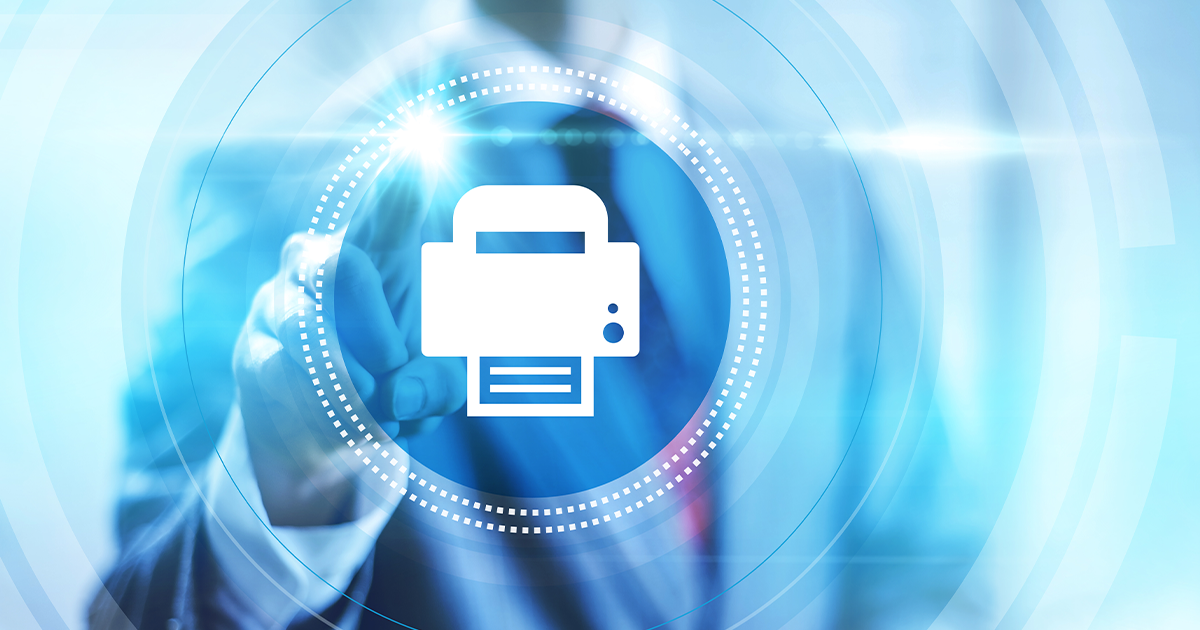A recent industry survey conducted in the United States and Europe found that 39 percent of IT decision makers agree that it is becoming harder to keep up with print security demands.
However, this same survey also revealed that Managed Print Services (MPS) users are generally happier with the security of their data, compared to those not working with a MPS provider.
In today's digital age, secure printing is crucial for organizations to protect sensitive information and maintain data privacy. This article explores the importance of secure print and provides strategies for organizations to enhance their print security.
This includes learning more about:
What Is Secure Print?
Secure print is an optional feature that can be added to office printers or multi-function devices that allows users to send documents to be printed, held at the device or in the cloud and will print only when the user authenticates at the printer. This ensures that sensitive information is not left unattended on the print tray and reduces the risk of unauthorized access to printed documents. Secure print works especially well with shared office printers.
By understanding how secure print works, organizations can better control who has access to printed materials and minimize the chances of data breaches.
RELATED: The Expert’s Guide to End-to-End Print Security
Benefits of Secure Print for Organizations
Implementing secure print offers multiple benefits such as enhanced data security, compliance with HIPAA regulations, reduced paper waste and increased accountability.
By prioritizing secure print, organizations can safeguard their confidential information and build trust with their customers.
RELATED: How to Implement Zero Trust Printing
Common Threats to Print Security
Print security threats include unauthorized access to printed documents, document interception during printing, unclaimed prints left on trays and the risk of confidential information being exposed or stolen.
Being aware of these threats allows organizations to take proactive measures to mitigate risks and protect sensitive data.
RELATED: Can Printers Be Hacked? Yes. Here’s How to Prevent It
Best Practices for Secure Printing
Some best practices for secure printing include setting up user authentication for print jobs (such as Follow Me or Find Me printing), regularly updating printer firmware for security patches, encrypting print data in transit, implementing print audit trails and training employees on secure printing protocols.
By following these best practices, organizations can create a secure printing environment and reduce the likelihood of data breaches through printed materials.
Implementing Secure Print Solutions
To implement secure print solutions, organizations can enlist the help of a MPS provider who:
- Offers secure print options for on-premise and cloud environments
- Partners with printer manufacturers that include built-in device security functionalities
- Notifies customers of print security updates, news or emerging security risks
In addition, it is recommended that organizations conduct periodic security assessments of their print fleet and establish a print security policy for their employees to follow.
By actively implementing secure print solutions, organizations can enhance their overall data security and minimize the risk of print-related security incidents.
Your Partner for Print Security
Leverage the office technology experts at Gordon Flesch Company. We’re here to help you with information on print security best practices, potential threats and solutions that will enhance your organization’s overall security. Learn the five steps to keeping your networks secure by downloading your complimentary copy of our Cybersecurity for Printers infographic.










